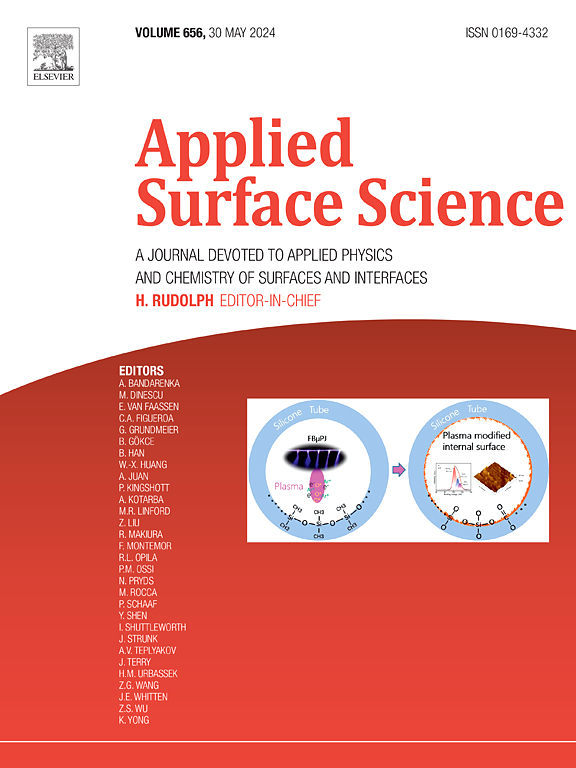Periodic array structures for MoO3/Ag composites: improving the stability and uniformity for enhanced SERS performance
IF 6.3
2区 材料科学
Q2 CHEMISTRY, PHYSICAL
引用次数: 0
Abstract
Surface-enhanced Raman scattering (SERS) has attracted considerable attention for its ability to provide molecular fingerprint information with remarkable sensitivity, which makes it a powerful and nondestructive detection technique. In this study, SERS substrates were fabricated by sequentially depositing Ag and molybdenum trioxide (MoO3) layers onto hexagonally close-packed polystyrene (PS) spheres via radiofrequency magnetron sputtering in an argon plasma atmosphere. The SERS performance of the fabricated MoO3/Ag/PS films was evaluated by using 4-mercaptobenzoic acid (4-MBA) as a probe molecule. Notably, the SERS intensity of 4-MBA on the MoO3/Ag/PS substrate remained largely unchanged compared with that on the Ag/PS substrate, despite the increased adsorption distance between the adsorbed molecules and Ag particles, regardless of the excitation light irradiation. These substrates demonstrated high sensitivity and uniformity, achieving a detection limit of 9.5 × 10-9 M with a relative standard deviation of 5.25 %. Furthermore, the addition of a MoO3 layer significantly enhanced the storage stability of the substrates by effectively decreasing oxidation of the Ag surface. As a result, the MoO3/Ag/PS films, combining long-term stability with uncompromised detection sensitivity, exhibit excellent potential for high-sensitivity chemical and biological sensing applications. This study introduces a novel experimental approach and lays the foundation for further advancements in SERS substrate research and development.


用于 MoO3/Ag 复合材料的周期阵列结构:提高稳定性和均匀性以增强 SERS 性能
表面增强拉曼散射(SERS)以其卓越的灵敏度提供分子指纹信息的能力引起了人们的广泛关注,使其成为一种强大的无损检测技术。在本研究中,通过射频磁控溅射在氩气等离子体气氛中,将银和三氧化钼(MoO3)层依次沉积在六边形紧密堆积的聚苯乙烯(PS)球体上,制备了SERS衬底。以4-巯基苯甲酸(4-MBA)为探针分子,对制备的MoO3/Ag/PS薄膜的SERS性能进行了评价。值得注意的是,与Ag/PS底物相比,尽管在激发光照射下,被吸附分子与Ag粒子之间的吸附距离增加,但4-MBA在MoO3/Ag/PS底物上的SERS强度基本保持不变。检测限为9.5 × 10-9 M,相对标准偏差为5.25 %。此外,MoO3层的加入通过有效地减少Ag表面的氧化,显著提高了衬底的储存稳定性。因此,MoO3/Ag/PS薄膜结合了长期稳定性和不受影响的检测灵敏度,在高灵敏度化学和生物传感应用中表现出优异的潜力。本研究引入了一种新的实验方法,为进一步推进SERS衬底的研究和开发奠定了基础。
本文章由计算机程序翻译,如有差异,请以英文原文为准。
求助全文
约1分钟内获得全文
求助全文
来源期刊

Applied Surface Science
工程技术-材料科学:膜
CiteScore
12.50
自引率
7.50%
发文量
3393
审稿时长
67 days
期刊介绍:
Applied Surface Science covers topics contributing to a better understanding of surfaces, interfaces, nanostructures and their applications. The journal is concerned with scientific research on the atomic and molecular level of material properties determined with specific surface analytical techniques and/or computational methods, as well as the processing of such structures.
 求助内容:
求助内容: 应助结果提醒方式:
应助结果提醒方式:


